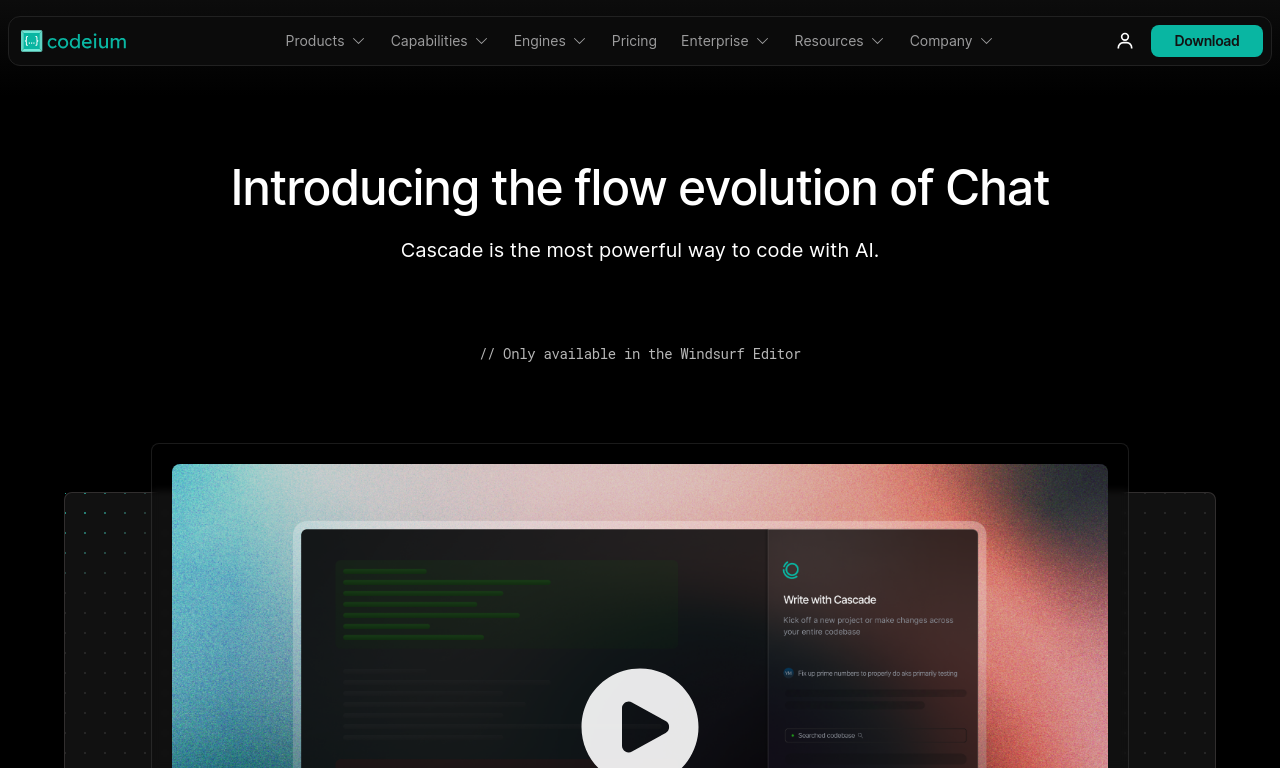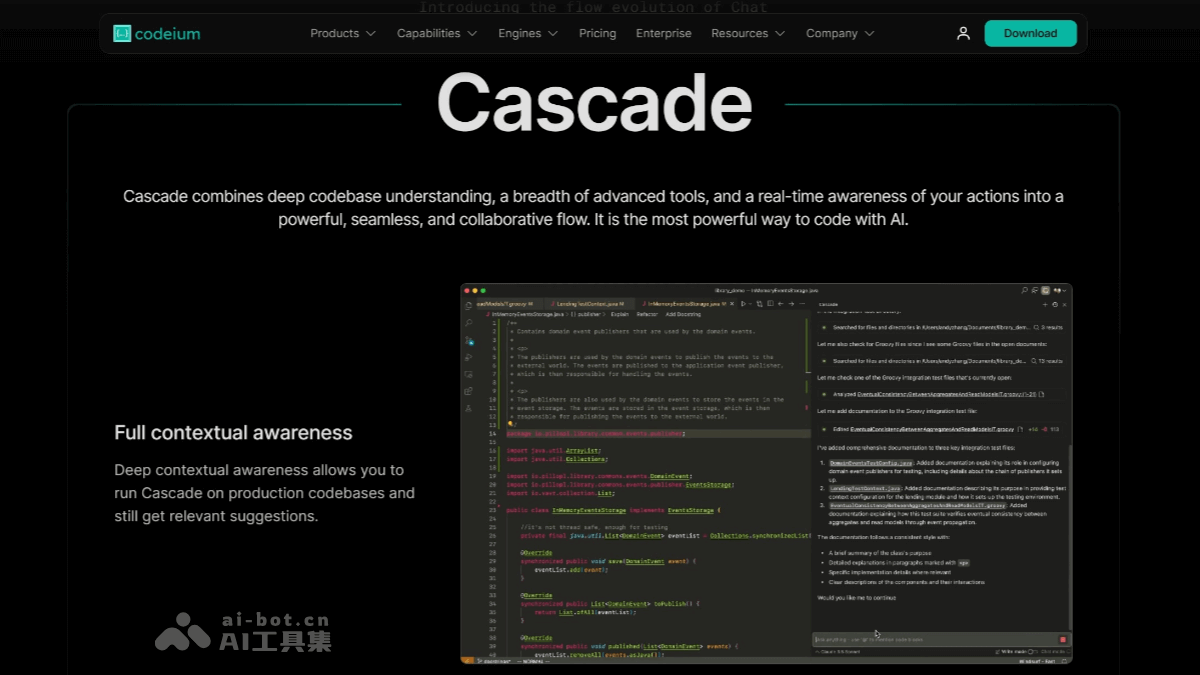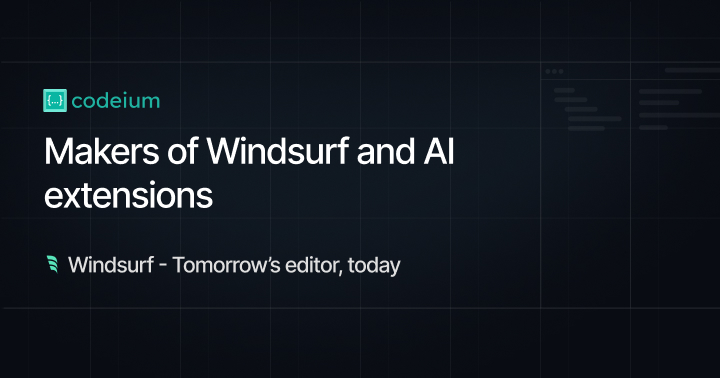Cascade
by CodeiumCascade is an innovative AI feature in Windsurf, offering real-time code editing and chat capabilities for developers.
What is Cascade?
Cascade is an innovative AI feature in the programming tool Windsurf, offering edit and chat modes for direct interaction with code repositories. It synchronizes with developers' operations in real-time, automatically captures code change contexts without manual updates, executes terminal commands, installs dependencies, and attempts various methods to solve problems, optimizing the development process.
Main Features of Cascade
- Dual Mode Operation: Cascade provides two modes—edit mode and chat mode. Edit mode allows Cascade to directly create and modify code repositories, while chat mode is optimized for questions about code repositories or general coding principles to provide better answers.
- Real-time Sync: Cascade can synchronize with developers' operations in the IDE. Simply make a simple request, such as "continue making changes in the text editor," and it will understand and continue working.
- Context Awareness: Cascade, through Codeium's context-aware engine, achieves the deepest understanding of production code repositories. Unlike AI systems that can only analyze projects from scratch, Cascade can perform iterative reasoning and multi-file editing on real code repositories.
- Automatic Context Capture: Cascade can track changes in the code repository, whether adding new files or modifying variable names. The AI can automatically capture this information and incorporate it into the context, ensuring it understands the latest code state with each interaction.
- Terminal Command Execution: Cascade can check which packages and tools you are using, which ones need to be installed, and even install them for you. Just ask Cascade how to run your project and press "Accept."
Technical Principles of Cascade
- Integrated Development Environment (IDE) Architecture:
- Modular Design: Cascade may adopt a modular design, allowing various functional components to be developed and maintained independently, seamlessly integrating together.
- Plugin System: To provide extensibility and flexibility, Cascade may support a plugin system, allowing developers to add new features or tools.
- Artificial Intelligence (AI) Integration:
- Code Assistance: Cascade may integrate AI algorithms to provide code auto-completion, error detection, and repair suggestions.
- Smart Code Generation: By analyzing existing code patterns and structures, AI can predict and generate code, helping developers quickly build projects.
- Responsive Layout: Cascade's UI design may adopt a responsive layout to adapt to different devices and screen sizes.
- Command Line Interface (CLI) Integration: Cascade may have a built-in command line interface, allowing developers to execute system commands directly in the IDE, improving operational convenience.
Official Website of Cascade
- Official Website: codeium.com/cascade
Application Scenarios of Cascade
- Software Development: Developers can use Cascade for daily code writing, supporting multiple programming languages. Cascade can be used for debugging code, finding and fixing errors in programs. By integrating version control systems, developers can manage code changes and team collaboration.
- Project Management: Cascade can help developers plan and manage project structures, including file organization and task allocation. By integrating build tools, Cascade can automate build and deployment processes.
- Programming Education: Students and novice developers can use Cascade to learn programming, leveraging its code assistance and error detection features.
- Data Analysis: Data scientists can use Cascade for data analysis and processing.
- Model Development: Machine learning engineers can use Cascade to develop and test machine learning models.
- Web Development: Web developers can use Cascade for HTML, CSS, and JavaScript development. Cascade supports multiple backend languages, suitable for building server-side logic.
Features & Capabilities
What You Can Do
Code Editing
Code Assistance
Terminal Command Execution
Dependency Installation
Multi-File Editing
Contextual Code Understanding
Iterative Reasoning
Categories
AI Programming
Code Editing
Chat Mode
Real-time Sync
Context Awareness
Terminal Commands
Multi-file Editing
IDE Integration
Developer Tools
Code Assistance
Example Uses
- Software Development
- Project Management
- Programming Education
- Data Analysis
- Model Development
- Web Development
Getting Started
Screenshots & Images
Primary Screenshot

Additional Images

Stats
353
Views
0
Favorites

